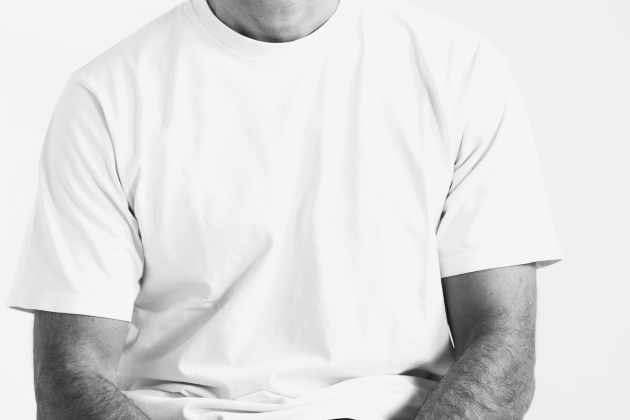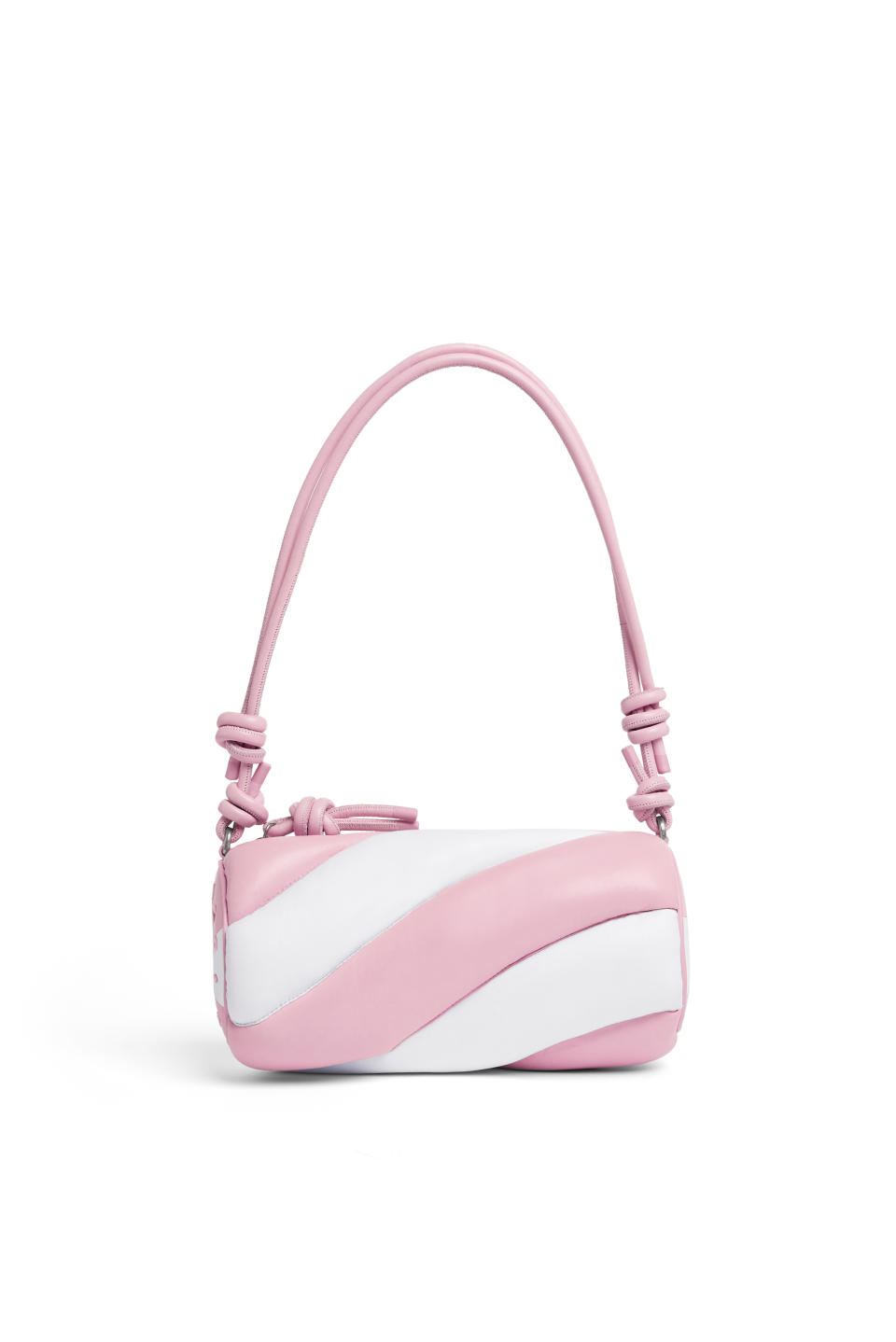Fiorucci’s Big 2024: Physical Rollout, Runway Show and a New Home

MILAN — More than mere resolutions, Fiorucci’s chief executive officer Alessandro Pisani has big plans already in motion at the brand in 2024.
The label founded by the late visionary designer Elio Fiorucci launched a new chapter of its history last year, relocating from London to Milan under a new owner, new management and the new creative direction of Francesca Murri. Now it will continue its journey of overall repositioning with a series of moves, including the first steps into physical distribution, a website revamp and the opening of new headquarters here, culminating in a runway show to be staged during Milan Fashion Week in September.
More from WWD
“We’ve been working hard since unveiling the pilot collection last September,” Pisani told WWD in a lengthy interview on Tuesday. “Then there was the sales campaign in November, when we showed the full-fledged collection. And it wasn’t easy to have buyers to come and check it but the Fiorucci name was a big push in this sense,” he said, adding that now the focus is to build on the brand awareness to propel its elevation in the accessible luxury segment.
To this end, on Thursday the first pop-up store under the new creative direction will be unveiled at the Rinascente department store here. The 1,291-square-foot space located on the fourth floor — which also showcases the likes of Acne and Jacquemus — will run for a month and come with a flashy installation in sync with Murri’s pop vision.
While he kept further details under wraps, Pisani teased that the tie-up with the retailer will continue throughout the year with other activations, including one that Rinascente will dedicate to the denim category and that Fiorucci will join.
Beyond Italy, a similar approach will be embraced to test the French market, where the brand will launch a 275-square-foot pop-up at Galeries Lafayette Champs-élysées in Paris on March 4.
“It’s the first time we will actually see the reaction of end consumers to the first collection,” Pisani said of the two pop-up stores, highlighting that they will coincide with the delivery of the range at other wholesalers, too.

The executive sounded eager to solve the mismatch between the new Fiorucci image and the collection that’s been in stores and at its online shop until now, created under the previous tenure. To this end, this month the brand’s website will be revamped to reflect Murri’s vision ahead of the commercial drop of her seminal collection. Looking forward, the online platform will be increasingly enriched with content and perfected in its user experience to round out its e-commerce functionalities.
Overall, Pisani said he’s not interested in replicating the Rinascente and Galeries Lafayette activations on a large scale. “For us, the pop-up stores have an image and communication value. We don’t want to open a hundred of them but use them as a test and as a way to prove department stores that we have what it takes also to be a permanent presence on their floors, via corners or shops-in-shop,” Pisani said.
The next phase in the distribution strategy will be to operate temporary stores directly on streets or in key resort destinations. Pisani sees the latter as particularly strategic to express the more experiential side and lighthearted nature of the brand, “as they would intercept that positive attitude of consumers on vacation.”
Fiorucci still has a stand-alone store in London’s Soho area, which is part of the legacy of the previous owners of the company and veteran British clothing retailers Stephen and Janie Schaffer. Yet Pisani teased there are no plans to keep that unit open long-term, also because he believes the location doesn’t align with the positioning he’s targeting.
Opening another Fiorucci flagship store is off the table for the moment, too. The executive jokingly said he’s “terrified” about taking such a step given the heavy legacy Fiorucci carries retail-wise, as he winked to the mother of all retail concepts the founder opened in the city’s central San Babila in 1967 as well as the 1976 flagship in Manhattan that was commonly described as a “daytime Studio 54.” It regularly attracted the likes of Andy Warhol, Truman Capote, Jean-Michel Basquiat, Madonna, Marc Jacobs, Robert Mapplethorpe and Jean-Paul Goude, to name a few.
But the brand will still have a physical home. Pisani has zeroed in on a 10,764-square-foot space nestled in Milan’s lively Chinatown area a stone’s throw away from Dsquared2’s Ceresio 7 headquarters and the ADI Design Museum. Dubbed “Casa Fiorucci,” the open-space hub will merge the brand’s offices, design department and showroom, in addition to becoming a meeting point for artists and a constellation of collaborators of the brand, in sync with the approach its founder embraced throughout his career.
“Casa Fiorucci will be essential in the build-up of the brand and the creation of content, especially those developed with external collaborators,” confirmed Pisani, who aims to move into the space by summer. “We’re studying how to turn it into a white box, agile and multifunctional but still infused with a strong Fiorucci identity.”
Ahead of the official opening, press and buyers will be able to get a glimpse of the venue since the brand is planning to stage the presentation of its fall 2024 collection there on Feb. 22. Pisani teased a daytime presentation of the lineup and the complementary look book images will be flanked by a nighttime event in a still undisclosed club, where live performances and DJ sets promise to evoke the party attitude of the brand’s heyday in a contemporary way.
The move is in sync with the overarching vision of favoring physical experiences and in-person community-building occasions, with Pisani additionally seeing in the clubbing scene a great opportunity for activations that could boost the brand’s visibility.
The presentation’s format will also reflect the duplicity embedded in the Fiorucci DNA and reprised by Murri already in her first collection. This combined a more daytime offering infused with Pop prints, candy graphics and pastel colors with a nocturnal side of darker shades, scarlet accents, lingerie details and body-hugging vinyl and Lycra fabrics.
Counting previous stints at established houses like Ferragamo, Gucci and Givenchy before being tasked to oversee all categories for Fiorucci, Murri said her ultimate goal is to reignite the playful and lighthearted attitude of the Italian brand and reshape its disruptive heritage in order to make it relevant for today.
Asked about the feedback from buyers to the first collection, Pisani said that jersey and denim pieces as well as accessories — including puffy Neoprene flip-flops and the Mella marshmallow-shaped leather bag that will be a key focus of the pop-up stores — were among the categories that resonated the most.

“Everything rooted in joy, color and that sugar-coating attitude worked really well, also because I think they nodded to those fun objects that could be found at Fiorucci stores,” Pisani said. “So the fun part was the one that worked best, which was a big lesson for us. Those ‘safe’ crewneck knits or basics with little logos were not necessary,” continued the executive, adding that the brand is committed on not “diluting the fashion message” nor offering “more declinations than needed.”
Respecting the brand’s inclusive ethos, the gender-bending approach of the collection also resonated among buyers, with Pisani listing a bomber nylon jacket covered with pockets as one of most favored pieces.
“But what surprised me the most were the requests for licenses,” said the executive, listing demands encompassing from childrenswear and eyewear to home lines and beauty. The latter is seen as the one with most potential business-wise, especially in fragrances.
Yet Pisani acknowledged the overall uncertainty the market is experiencing, “which we see expressed in an insensibility toward everything that is new. This makes things very difficult for us,” he said. “Our reaction is to earn buyers’ trust building our credibility with product, communication, contents and events.”
To this end, the brand’s repositioning will culminate with the staging of a runway show during Milan Fashion Week in September.
“We have always had this idea but we were cautious in implementing right away,” Pisani said about the move, which he sees strategic also to favor Fiorucci’s distribution boost in markets he sees pivotal in the medium term, such as the U.S., Japan and South Korea.
Closely following the fashion show, the executive will be able to count on extra buzz to further rev up the interest around Fiorucci thanks to the big exhibition the Triennale Milano museum is set to dedicate to the brand’s founder.
Opening in October and running through February 2025, the exhibit will be curated by Judith Clark and aim to represent the different creative and entrepreneurial interests of Fiorucci — who died in 2015 at age 80 — exploring his multifaceted life across fashion, architecture, design, music, art and entertainment.
Best of WWD
